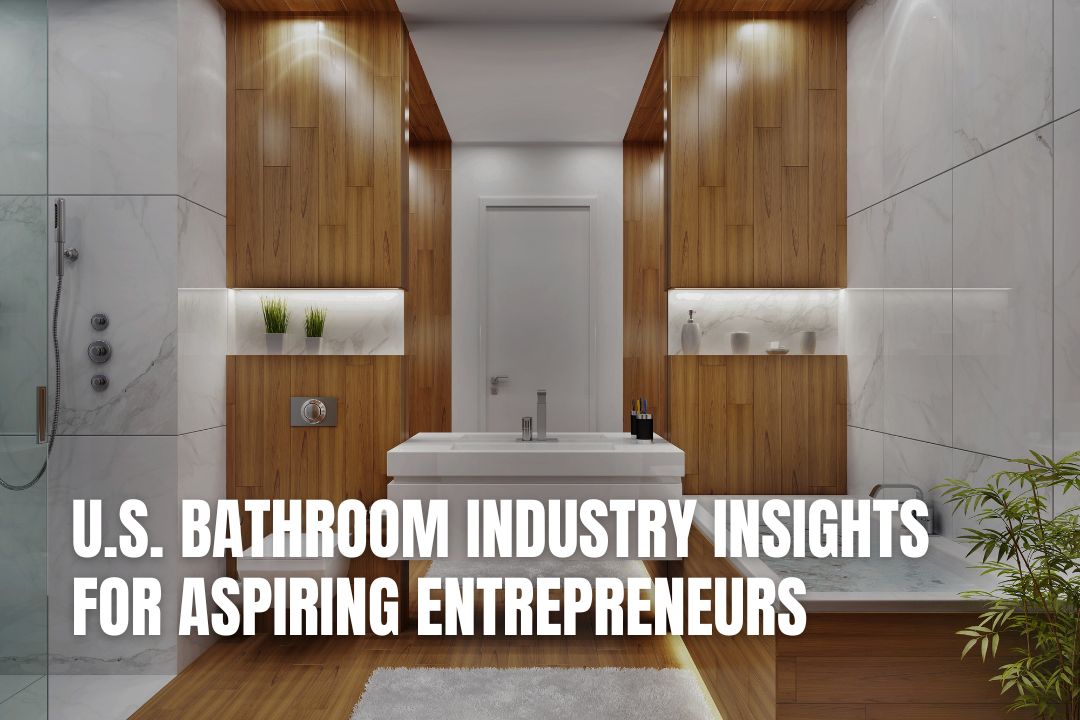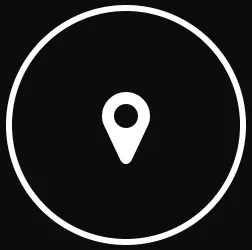U.S. Bathroom Industry Insights for Aspiring Entrepreneurs
October 21, 2025

Ever notice how California toilets now flush with less than 1.28 gallons, or how smart showers let you tweak water temperature from your phone? That’s just the tip of the iceberg, America’s bathroom industry is shifting fast, fueled by new regulations, tech innovations, and changing consumer tastes.
The numbers back it up: the U.S. bathroom fixtures market hit $20 billion in 2024 and is projected to surpass $23 billion by 2030. But behind this steady growth lies a more intricate story, a mix of regulatory hurdles, cutting-edge technology, and savvy consumers who know exactly what they want.
Key Takeaways on U.S. Bathroom Industry Insights
- Regulations Set the Standard: You must follow strict federal and state environmental rules, such as WaterSense and CALGreen. These policies dictate everything from water usage per flush to the types of sustainable materials required in your products.
- Understand Your Audience: The market is divided into distinct segments. You can target the premium buyer with custom smart features, the mid-range consumer with a balance of price and performance, or the entry-level market with simple, compliant, and affordable options.
- Technology Drives Growth: Innovation is central to success. Advances in water efficiency, smart home connectivity, and the development of durable, eco-friendly materials are what will make your products stand out.
- Acknowledge Market Challenges: You will face competition from established giants and nimble new brands. Be prepared for supply chain risks, issues with making new tech compatible with older homes, and pressure from global competitors.
Register Your LLC
Company Registration
START NOWPolicy Regulations: Environmental Standards Redefine Industry Thresholds
Federal and State-Level Rules: A Dual Play
At the federal level, the EPA’s WaterSense label has basically become the “gold standard” for water-efficient products. To earn it, toilets can’t use more than 1.28 gallons per flush and must handle at least 350 grams of solid waste.
States like California take it even further. Their CALGreen standards limit showerhead flow to 6.8 liters per minute and commercial spray valves to under 5 liters per minute, about 20% stricter than federal rules. California’s tiered compliance system goes deeper: Tier 1 sets the basics, while Tier 2 pushes urinal flush volumes down to a mere 0.47 liters per use.
Sustainable Materials: The New Compliance Frontier
Water efficiency isn’t the only focus. CALGreen now requires lead-free brass, plastic with at least 25% recycled content, and ceramics that pass heavy-metal leach tests. On top of that, California Proposition 65 limits cadmium, mercury, and other hazardous substances, making “lifecycle sustainability” a mandatory benchmark, not just a marketing buzzword.
Consumer Segmentation: From Basic Needs to Lifestyle Goals
Premium Market: Customization Meets Smart Tech
Making up about 30% of the market, the high-end segment is all about personalization and tech-savvy solutions. Brands like Kohler let buyers pick everything from glaze colors and metal finishes to flush modes. It’s no wonder this segment has seen a 40% sales boost over the past five years.
Smart toilets are another hot trend. Take TOTO’s Neorest series, which comes with self-cleaning, bidet, and warm-air drying features. These high-tech toilets have pushed smart bathroom sales up by 50% over the last three years, and experts predict the segment could grab over 20% of the market by 2030.
Mid-Range Market: The Sweet Spot Between Price and Performance
The mid-tier segment, dominated by brands like Delta and Moen, balances affordability with smart functionality. Delta’s dual-mode, water-saving showerheads, for example, meet WaterSense standards while using air injection to keep water pressure strong, all priced between $100 and $200.
This middle market accounts for over 50% of total industry sales, acting as the main playground for rolling out new policies and technologies.
Entry-Level Market: Simple, Compliant, Reliable
At the entry level, companies like American Standard and Giving Tree Home focus on essential functionality and regulatory compliance. Think WaterSense-certified toilets under $300, no smart bells and whistles, but fully efficient and compliant. With more affordable housing projects popping up, this segment is steadily growing at about 3% per year.
Technological Innovation: The Engine Driving Bathroom Market Growth
Water Efficiency: Doing More with Less
Balancing performance with conservation is no small feat, but top brands are breaking new ground. TOTO’s pressure-assisted flush makes a 1.28-gallon toilet perform like a traditional high-volume model. Kohler’s dual-flush system lets users toggle between 3 liters and 4.8 liters per flush, tailoring water use to actual needs.
On the cleaning front, nano-coating technologies cut cleaning agent use by up to 80%, hitting both water and environmental targets. It’s efficiency without compromise.
Smart Connectivity: Bathrooms That Think
IoT (Internet of Things) is turning bathrooms into smart living spaces. Moen’s smart showers, for example, let users preset water temperature and flow patterns from an app, and even tie into home security to automatically shut off water when nobody’s home.
Meanwhile, Kohler’s smart toilets gather usage data that can help track personal health trends. These features resonate with Gen Z and younger homeowners, who love convenience and connected living. No surprise that online sales now account for 11% of total market revenue.
Sustainable Materials: Eco Meets Durable
Eco-conscious design is more than a trend; it’s becoming a standard. Giving Tree Home’s bathtubs use solid surface materials that reduce petroleum reliance while staying tough and long-lasting.
In luxury renovations, recycled glass mosaic tiles turn industrial waste into striking design statements, blending style with sustainability.
Challenges remain, though, especially around making recycled materials more durable in humid bathrooms. That’s the next frontier for R&D, and it’s where the industry is likely to see its next big breakthroughs.
Market Landscape and Emerging Challenges
Industry Giants vs. New Entrants
About 20 major players, including Kohler, American Standard, and TOTO, still control more than 80% of the market. These giants have strong brand recognition and loyal customer bases.
But the landscape is shifting. New brands are shaking things up with minimalist designs and direct-to-consumer (DTC) models, quickly winning over younger buyers via social media campaigns and influencer partnerships.
This push-and-pull between established giants protecting their turf and agile startups driving innovation keeps the industry dynamic, but it also cranks up competition on price and technology.
Three Key Challenges Ahead
- Supply Chain Risks: Rising raw material costs and logistics expenses have shaved 5–8% off mid-tier product margins.
- Technical Compatibility: Older plumbing in many U.S. homes can struggle with modern water-saving tech, sometimes leading to frustrating user experiences.
- Global Competition: Affordable smart bathroom products from Asia are increasingly taking market share in the low- and mid-range segments.
Conclusion
The story of the U.S. bathroom industry shows one thing clearly: policy sets the baseline, consumer demand drives direction, and technology fuels momentum.
From WaterSense-certified toilets to CALGreen-compliant upgrades, from smart toilets to recycled materials, this $23 billion market proves that sustainability and comfort can go hand in hand.
For entrepreneurs looking to break into this market, understanding these dynamics isn’t optional; it’s essential.
FAQs for U.S. Bathroom Industry Insights for Aspiring Entrepreneurs
What are the most important regulations to know when entering the U.S. bathroom market?
You should focus on the EPA’s WaterSense label, which sets federal standards for water efficiency. Additionally, be aware of stricter state-level rules like California’s CALGreen, which has more demanding requirements for water flow and mandates the use of sustainable and non-toxic materials.
How is the U.S. bathroom market segmented by consumer?
The market is generally split into three tiers. The premium segment (about 30%) wants customisation and smart technology. The mid-range (over 50%) seeks a balance between affordability and modern features. The entry-level segment focuses on basic function, compliance, and cost-effectiveness.
What technological trends are shaping the bathroom industry?
The main trends are improved water efficiency without losing performance, smart connectivity through IoT devices like app-controlled showers and health-monitoring toilets, and the increasing use of sustainable, recycled materials in manufacturing.
What are the biggest challenges for a new entrepreneur in this industry?
Newcomers face several hurdles. These include intense competition from established brands, supply chain disruptions that affect costs, technical compatibility issues when installing modern fixtures in older homes, and growing competition from affordable international products.
How can I ensure my business is legally compliant from the start?
Starting with the correct legal structure is fundamental. Using a service like Storific to register your company can help you establish a proper foundation, allowing you to focus on product development and market strategy while ensuring your business meets all legal requirements.

